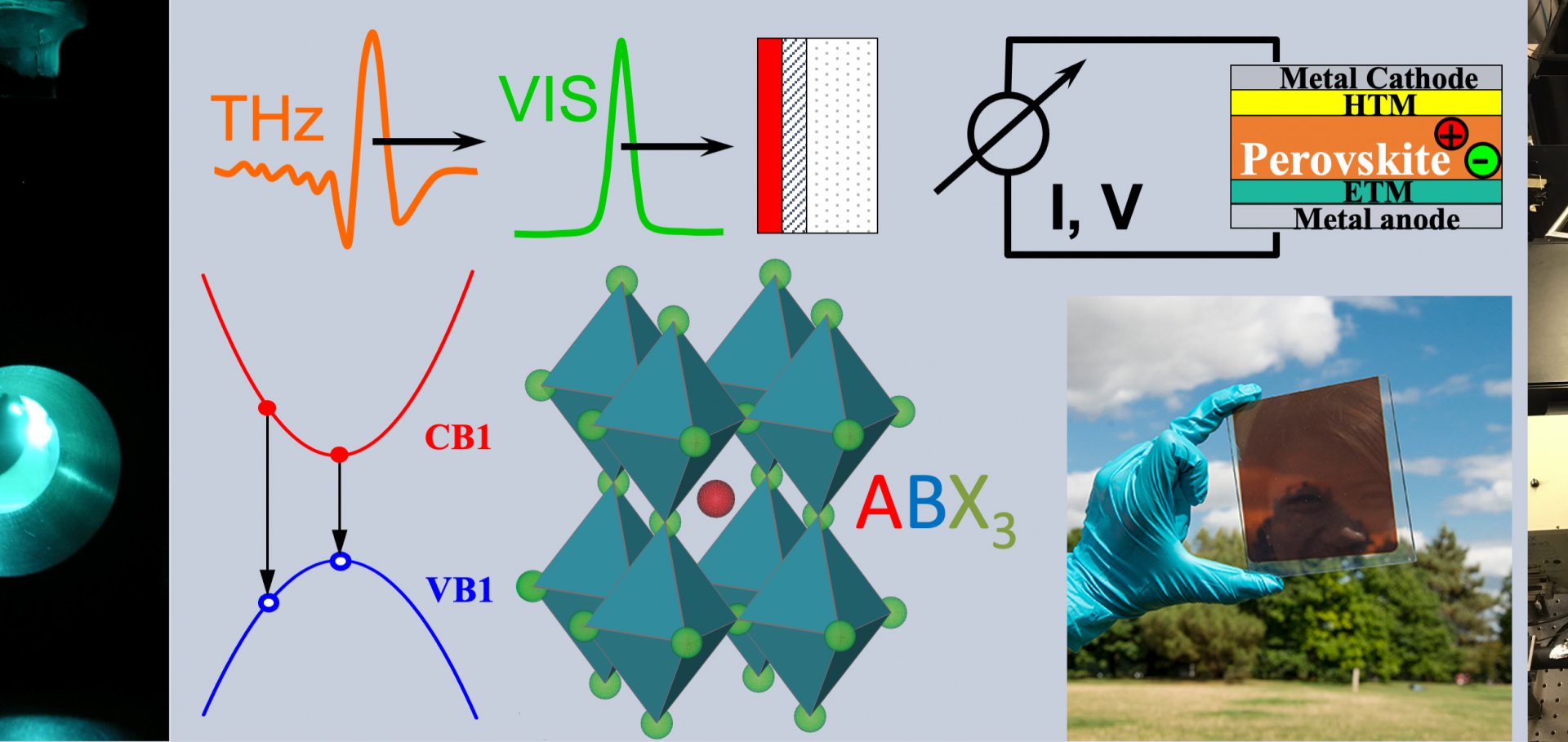Ultrafast terahertz conductivity dynamics in mesoporous TiO2 : Influence of dye sensitization and surface treatment in solid-state dye-sensitized solar cells
Journal of Physical Chemistry C 114:2 (2010) 1365-1371
Abstract:
We have used optical-pump terahertz-probe spectroscopy to explore the photoinduced conductivity dynamics in mesoporous anatase TiO2 films, commonly employed as the electron-transporting electrode in dye-sensitized solar cells. We find an intrinsic mobility value of 0.1 cm2/(V s) and diffusion length of ∼20 nm for electron motion through the TiO2 matrix. The photoconductivity dynamics in TiO2 films, both before and after sensitization with a ruthenium bypyridyl complex termed Z907, were examined in order to study the charge injection, trapping, and recombination time scales. We observe a biphasic charge injection from Z907, with a fast sub-500 fs component, followed by a slower 70-200 ps component. This is followed by photoconductivity decay over the first few nanoseconds, predominantly reflecting charge carrier trapping. In addition, we have utilized terahertz spectroscopy to investigate the influence of treating the titania surface with TiCl4 on early-time charge dynamics. In the solar cells, surface treatment of the mesoporous TiO2 with TiCl4 is critical to enable efficient operation. Here, we find that neither early-time charge mobility nor charge injection rate or decay times are significantly affected by the treatment, which suggests that it may, instead, have an impact on phenomena occurring on longer time scales. © 2010 American Chemical Society.Impact of nuclear lattice relaxation on the excitation energy transfer along a chain of π-conjugated molecules
PHYSICAL REVIEW B 81:8 (2010) ARTN 085438
Analyzing the molecular weight distribution in supramolecular polymers.
J Am Chem Soc 131:48 (2009) 17696-17704
Abstract:
We have investigated the formation process of supramolecular linear polymer chains and its influence on the resulting chain length distribution function. For this purpose, we explored the migration of excitation energy between oligofluorene units coupled together through quadruple hydrogen-bonding groups to form linear chains that are terminated by oligophenylene vinylene end-caps acting as energy traps. The energy transfer dynamics from the main chain to the chain end was monitored experimentally using time-resolved PL spectroscopy and compared to an equivalent Monte Carlo simulation incorporating information on the structure of the chains, the transition transfer rates, and various weight distribution trial functions. We find that the assumption of a Flory distribution of chain lengths leads to excellent agreement between experimental and simulated data for a wide range of end-cap concentrations. On the other hand, both a Poisson function and a simplified assumption of a monodisperse distribution significantly underestimate the presence of long chains in the ensemble. Our results therefore show that supramolecular polymerization is a steplike process equivalent to polycondensation reactions in linear covalent polymers. These findings emphasize that equal reactivity of the supramolecular building blocks leads to a dynamic growth process for the supramolecular chain involving all chain components at all times.Terahertz excitonic response of isolated single-walled carbon nanotubes
Journal of Physical Chemistry C 113:42 (2009) 18106-18109
Abstract:
We have investigated the ultrafast far-infrared transmission of isolated single-walled carbon nanotubes using optical-pump THz-probe spectroscopy. The THz dielectric response is dominated by excitons with an initial, rapid decay due to Auger recombination followed by a slow decay of isolated single excitons. Frequencydependent analysis of the photomduced dielectric function suggest an internal excitonic excitation at ∼11 meV with further low-frequency (∼0.6 and 1.4 THz) absorption features at high densities ascribed to exciton complexes. A featureless conductivity bleaching is attributed to an exciton-induced reduction in the mobility of free carriers caused by phase-space filling. © 2009 American Chemical Society.Carrier lifetime and mobility enhancement in nearly defect-free core-shell nanowires measured using time-resolved terahertz spectroscopy.
Nano Lett 9:9 (2009) 3349-3353


